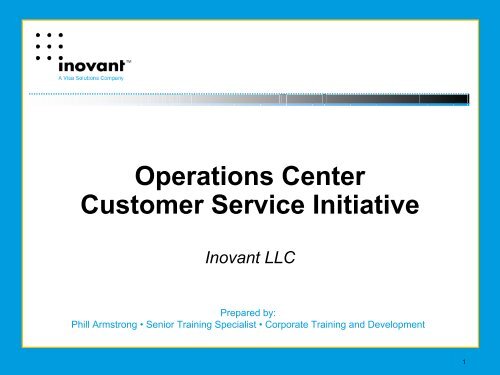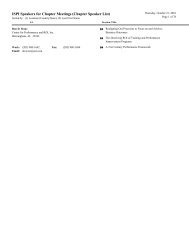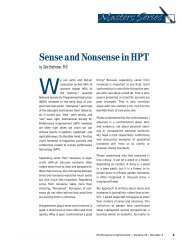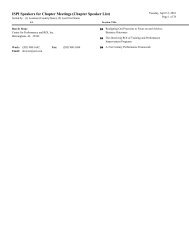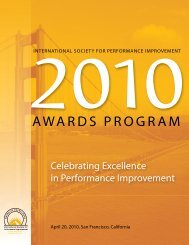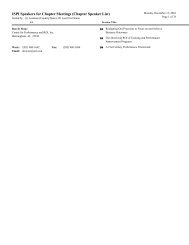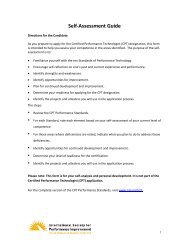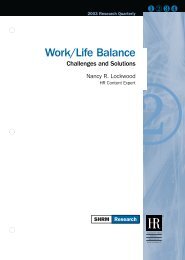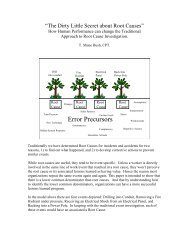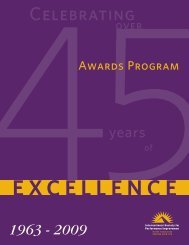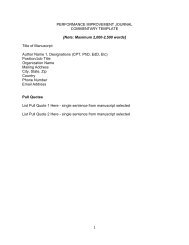Operations Center Customer Service Initiative
Operations Center Customer Service Initiative
Operations Center Customer Service Initiative
You also want an ePaper? Increase the reach of your titles
YUMPU automatically turns print PDFs into web optimized ePapers that Google loves.
<strong>Operations</strong> <strong>Center</strong><br />
<strong>Customer</strong> <strong>Service</strong> <strong>Initiative</strong><br />
Inovant LLC<br />
Prepared by:<br />
Phill Armstrong • Senior Training Specialist • Corporate Training and Development<br />
1
Business Need<br />
Background<br />
• As the custodian of the world’s largest payment transaction engine, Inovant’s technical<br />
operations teams process 100 million+ payment transactions a day representing $1.4 trillion<br />
annually. In just one hour, Inovant is capable of processing more transactions than all the<br />
stock exchanges in the world handle in one day – with nearly 100% reliability.<br />
Inovant’s technical operations teams are the frontline support for banks around the world who<br />
connect with Visa to process payment transactions. Every day, Visa’s member banks place<br />
their trust directly in the hands of these technical experts.<br />
Business problem<br />
• In 2002 all customer satisfaction service levels were met and customer satisfaction scores<br />
were satisfactory. Nonetheless, there was a strong theme and sense of urgency that these<br />
teams could improve customer satisfaction.<br />
The challenge<br />
• How can we raise our customer’s satisfaction while maintaining our high<br />
availability and technical service level agreements?<br />
• How can we position our operations teams to continue to improve customer<br />
satisfaction results?<br />
2
Intervention<br />
Needs Analysis suggested:<br />
• Performance objective collaboration – Communication plan created and presented in<br />
order to share the customer satisfaction survey and its results. Facilitated sessions were<br />
held where technical operations teams developed performance objectives that specifically<br />
addressed survey metrics. Themes: expectation setting, feedback, ownership, social<br />
contracting (fully implemented)<br />
• <strong>Customer</strong> <strong>Service</strong> Skills Training – Several operations teams exhibited a lack of<br />
fundamental customer service skills. A call flow process was documented and integrated<br />
into training. Training was customized to include telephone customer service role play<br />
scenarios that reflected specific examples from the technical operations team’s<br />
environment. Themes: new process and skills transfer, practical application, re-usable call<br />
flow process model, skills underpinned team performance objectives (fully implemented)<br />
• Manager coaching and reinforcement plan – Coaching sessions with operations team<br />
managers offered tools and methods for implementing real-time objective based<br />
performance feedback, call review model, fun reinforcement games and “energizer”<br />
exercises. Themes: motivation and incentives (rewards and consequences), feedback,<br />
communication, accountability (25% implemented – full implementation in progress)<br />
• Equipment upgrades – Automated Call Distribution (ACD) infrastructure was poorly<br />
implemented and/or utilized. Use of telecom headsets, call review, integration<br />
into individual performance plan and review system recommended.<br />
Themes: supportive work environment, feedback, team and individual<br />
accountability (10% implemented – full implementation in progress)<br />
3
Results<br />
• Highly Satisfied customers<br />
8.6%<br />
• Very Highly Satisfied<br />
customers 6.8%<br />
60%<br />
50%<br />
40%<br />
30%<br />
197<br />
—<br />
390<br />
2<br />
145<br />
—<br />
376<br />
2<br />
127<br />
—<br />
390<br />
2<br />
154<br />
—<br />
376<br />
2<br />
2002<br />
2003<br />
2<br />
• Very Low and Low<br />
customers 3.1%<br />
20%<br />
10%<br />
2<br />
29<br />
—<br />
390 16<br />
—<br />
376<br />
2<br />
37<br />
—<br />
390<br />
2<br />
61<br />
—<br />
376<br />
• Satisfied customers 11.3%<br />
0%<br />
Very Low &<br />
Low<br />
Satisfaction<br />
Satisfied<br />
High<br />
Satisfaction<br />
Very High<br />
Satisfaction<br />
14% 1 of respondents moved from low and satisfied<br />
states to being either high or very highly satisfied<br />
1 Numeric variation is due to “not applicable” survey responses<br />
2 Numerator = Category responses (i.e. satisfied, highly satisfied, etc.) / Denominator = Total survey question responses<br />
4
Lessons Learned<br />
• Metrics matter! Isolating the meaning of Likert<br />
scaled based surveys, rather than simply<br />
averaging scores (thereby also averaging the<br />
meaning) offers more meaning/useful reporting<br />
and feedback metrics.<br />
• Training intervention is only a piece of the<br />
performance solution<br />
• Integration of feedback and accountabilities is key<br />
to improved customer satisfaction<br />
5
CY 2004 Objective<br />
• <strong>Customer</strong> satisfaction score target: Ideal average<br />
of customer satisfaction = Highly Satisfied<br />
SCORE “4”<br />
Implement regular reporting and feedback<br />
Implement team and individual accountabilities and<br />
incentives<br />
Implement improved equipment use practices<br />
Continue to support skill gaps with training, learning<br />
opportunities, and/or coaching<br />
6


